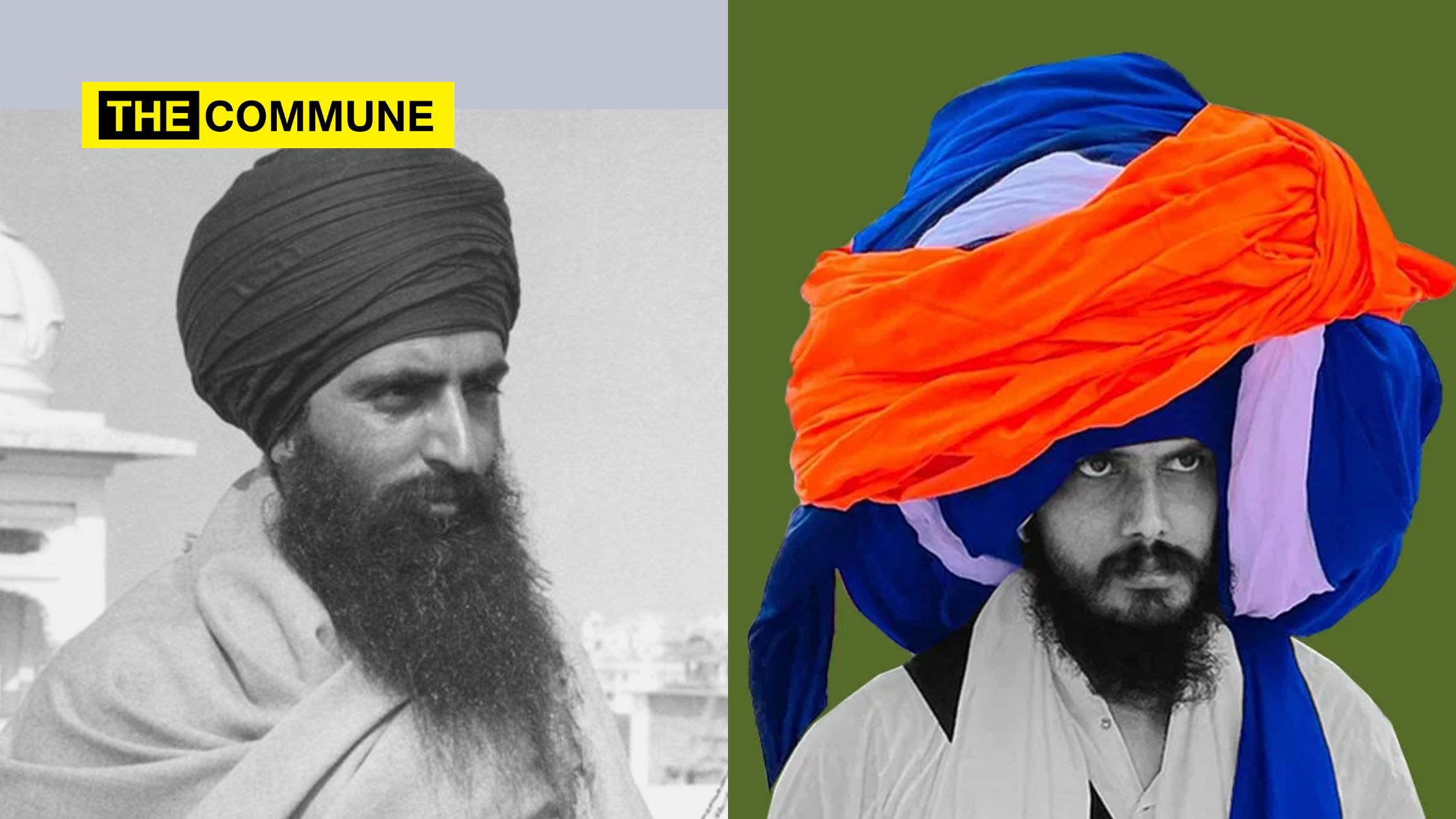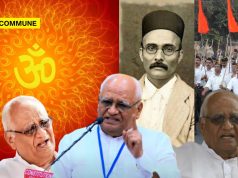
Recently, Khalistan proponent and self-styled Sikh preacher of the ‘Waris Panjab De’ group Amritpal Singh issued a threat to the Union Home Minister Amit Shah stating that the Khalistan movement should not be suppressed from flourishing. He also stated that if efforts are made to suppress their voices, then Shah will have a similar fate as former Prime Minister Indira Gandhi. This comes soon after scenes not witnessed in recent years had unravelled in Punjab. Hundreds of supporters of the radical leader, including several carrying swords and guns, clashed with police and stormed the Ajnala police station near Amritsar. They camped there until police “assured” Amritpal and his supporters that his associate Lovepreet Singh Tufan, arrested on charges that included kidnapping, would be released. These incidents add to the growing list of warning signs coming out of Punjab. The separatist tendencies of Khalistan movement are allowed to flourish in Punjab despite these warning signs. In this context we will look in to the history of Khalistan movement and understand how much of a significant threat it is to India?
Putting Khalistan movement in to perspective
The Khalistan movement is a Sikh nationalist movement that wants to create an independent state for Sikh people, via armed struggle or politics, inside the current North-Western Republic of India. Such a state existed in Punjab from 1709 to 1849. The idea of Khalistan was an idea first created in the 1940s, remained idle but was revived by an NRI seeking a separate homeland for Sikhs. In early 1980s, the movement had emerged as a major separatist movement, fed mostly by the bias of the Indian Government against Punjab in the case of Chandigarh and sharing of Ravi-Beas waters. There was intense political rivalry between Congress Party and the Akali Dal, Akali Dal was gradually gaining ground as the political representative of the Sikh community. Congress leadership of that time tried to divide the Akalis by propping up diverse groups of people within the Akali Dal. Jarnail Singh Bhindranwale led the Khalistan as an extremist movement, he was initially used by Congress to counter Akali Dal but later he was inspired by the Khalistan ideology and turned against the Indian government. The movement was fed on arms under the patronage of Pakistan’s ISI who was seeking revenge for the creation of Bangladesh. Bhindranwale emerged as the extremist voice of Sikhs, overruling the moderate voices of leaders, declared himself as the protector and arbiter of Sikh rights and acquired arms.
Demands for separate nation-hood for Punjab was carried out through violent protests and killings of high-profile persons in the Indian government. Operation Blue star was conducted to capture Bhindrawale in Harmandir Sahib Complex. The then PM Indira Gandhi was seen as an enemy of the Sikhs and two Sikh guards killed her in 1984. Her killing was followed by wide-spread riots against the Sikhs across India, the genocide of Sikhs across India fuelled more anti-India sentiment. From the early 1980s to early 1990s, Punjab went through a phase of wide-spread terrorism. Manifold extremist groups like the Khalistan Liberation Force, Khalistan Commando Force, Babbar Khalsa and umpteen others gained prominence and roamed around freely across Punjab. Sikhs being a patriotic group started to act against the protracted terrorist struggle and chose to side with the Indian nation, the then Punjab Police department succeeded in defeating the movement in the 1990s.
“Khalistan issue is a serious threat to India; it is high time that we start treating it as an issue akin to terrorism in Kashmir. Strict measures shall be taken against those who take up arms against the nation. Those who want to bleed India with ‘thousand cuts’ should not be spared in the name of vote bank politics.”
At the present, Khalistan movement is a dormant movement in India but it is slowly showing signs of resurgence. It does not hold much traction in the urban or local populace of Punjab. But the movement gets ideological support from Sikhs living in Canada, UK or USA. They pump money, ideological support to the struggle, ISI of Pakistan is still pumping money and effort in reviving the movement. The prolonged farm protests and propaganda associated with it gave a right condition for extremist elements to further their agenda. The rise of AAP in Punjab and the vote bank politics played by them has also complicated the situation.
Perfect concoction weak government and political appeasement
“The law and order situation in Punjab is collapsing. The state which abuts Pakistan is witnessing a sudden rise of extremist elements with visible support from abroad. What the Punjab need now is an effective government. The ‘green-horn’ government of AAP is struggling to contain the evil of separatism it unleashed for vote bank politics.”
The Aam Aadmi Party government in Punjab finds itself being ineffective against Khalistan elements in the state, or worse, unwilling to act against them after it buckled quickly as supporters of separatist leader overran a police station near Ajnala on Thursday. The charge has trailed the AAP since it made its first forays into Punjab in the 2017 Assembly elections. While that made no dent in the landslide the party got in the 2022 Assembly elections, a series of incidents since has exposed the weak and dangerous model of AAP governance. A month after Bhagwant Mann took over as head of the AAP government, Patiala was witness to a clash between pro-Khalistan activists and right-wing Hindu organisations. Days later, the parliamentary seat of Sangrur that Mann had vacated was won by pro-Khalistan leader Simranjit Singh Mann, president of the Shiromani Akali Dal (Amritsar). In November last year, a ‘Shiv Sena Hindustan’ leader was killed, with police blaming a “self-radicalised pro-Khalistani” youth. The past few months have seen the sudden rise of Amritpal Singh who returned from Dubai last year and now heads Waris Punjab De, an organisation founded by the late actor-activist Deep Sidhu. It was his supporters who twisted the arms of law and order forces in the state of Punjab.
Meanwhile, an agitation on the lines of the Singhu farmer stir, with tents planted for the long haul, has taken shape in Mohali, seeking the release of Sikh militants “who have completed their sentence”. All this coincides with regular pro-Khalistan marches and rallies across the state. Then there is the issue of political appeasement. In the eve of 2022 polls, Arvind Kejriwal had said that they will take a strong stand against the sacrilege issue of the Sikhs in the state. The AAP chief said that justice in sacrilege cases could be delivered within 24 hours. Never before heard in India, to win an election, the AAP chief chose to promise a law to radical elements which have eerie similarities to sacrilege laws existing in Muslim-Sharia countries of Pakistan or Saudi Arabia. If the AAP created its space in Punjab, and elsewhere, through clever use of social media, so has the pro-Khalistan lobby. It is via this that the Khalistan narrative has been kept alive and simmering, especially among the newer generation, apart from songs by popular Punjabi singers which have long flirted with themes of violence. The Sidhu Moose Wala phenomenon is also a part of this.
Besides, a lot more pro-Khalistan content remains floating on social media, over which in fact the AAP government has no control. Punjab was fooled by AAP’s promise of change. Despite his huge personal following, even CM Mann is struggling to establish himself as a dependable leader. The Mann government’s quick buckling to concede Amritpal’s demand will further the impression that it is too raw for crises such as this. Former CM Amarinder Singh, who has consistently talked of a threat of the rise of Khalistani elements and warned of Pakistan’s designs, repeated Thursday that what happened at the Ajnala police station was not a mere law and order problem. He said that it had “serious security implications for the state and the country”, and the Mann government was not equipped to handle the same. “Nip the evil in the bud,” said Punjab Congress chief Amarinder Singh Raja Warring in a statement, adding that the people had not voted for the AAP to push the state “back into the dark days of militancy”. But despite the unravelling incidents AAP government looks unable to stabilise the situation.
The law and order situation in Punjab is collapsing. The state which abuts Pakistan is witnessing a sudden rise of extremist elements with visible support from abroad. What Punjab needs now is an effective government. The ‘green-horn’ government of AAP is struggling to contain the evil of separatism it unleashed for vote bank politics. The Khalistan issue is a serious threat to India, it is high time that we start treating it as an issue akin to terrorism in Kashmir. Strict measures shall be taken against those who take up arms against the nation. Those who want to bleed India with ‘thousand cuts’ should not be spared in the name of vote bank politics.
(This article was originally published in The Pulse and has been republished here with permission.)
Click here to subscribe to The Commune on Telegram and get the best stories of the day delivered to you personally.




